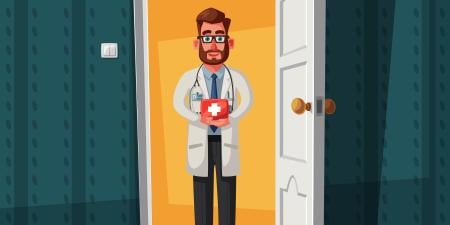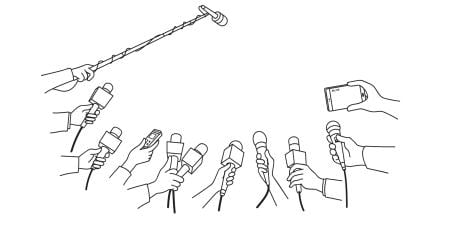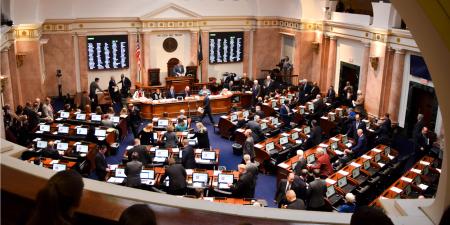Case
In February of 2005, Dr. Thomas Frieden, the health commissioner of New York City, publicized the case of a man who seemed to have a strain of HIV resistant to all known drug therapy and one that progressed more rapidly from HIV infection to full-blown AIDS than any other strain known. Dr. Frieden's office specified that the man in question was a male methamphetamine drug user who had unprotected sex with multiple male partners. In Dr. Frieden's words, "This case is a wake-up call. First, it's a wake-up call to men who have sex with men, particularly those who may use crystal methamphetamine."1 The stakes are not small regarding HIV infection in New York City. It is known that 88 000 New Yorkers are infected with HIV, and it is estimated that another 20 000 are infected and do not know. If a new "super-AIDS" strain were developing, it would have ominous consequences for the New York community.
Experts were split on whether the case truly represented a new strain of AIDS or rather a man whose increased susceptibility to the virus made it appear more virulent, though some did speculate that a new strain was inevitable. The New York Community HIV/AIDS Mobilization Project reacted strongly to Dr. Frieden's public statements, saying, "Rather than 'increasing awareness of the risks of unsafe sex and crystal use,' the Health Department risks stigmatizing gay men as crazed drug addicts carelessly or wantonly spreading a killer bug."2
Commentary
Was Dr. Frieden's statement unduly alarmist? Frieden's office, the New York City Department of Health and Mental Hygiene, considers the city as ground zero of the HIV epidemic in the US.3 Given the severity of the AIDS crisis in New York, what would be an appropriate public health action upon discovering the possibility of a new, drug-resistant HIV strain in the population? Frieden's news conference and alert to medical providers and hospitals followed the discovery of, not a cluster, but only 1 case of an infection with a drug-resistant strain of HIV that progressed rapidly to AIDS.1 Was the warning of an impending outbreak of a "super bug" premature? Should the health commissioner's office have waited until an outbreak of this new infection was certain—that is, more cases reported in the New York area—before making an announcement?
Going Public: Contextual Issues
It should be pointed out that this incident—the potential of a super-AIDS epidemic—presented itself in a new era of emergency preparedness. Although the issuing of Frieden's wake-up call was never thought to be a response to an act of terrorism, we may do well to consider this case in the context of a post-9/11 New York. Dr. Frieden assumed his post of commissioner for the health of New York not long after the 2001 attacks on the World Trade Center. Of the tragedy, Frieden was quoted as saying, "It has changed the face…[and] character of our city. The trauma is significant. I think our responsibility to the public is to be honest."4 Indeed, providing communities with honest information and acting on that information in a timely manner are important functions of public health officials.
A Super-AIDS Virus in New York?
The public's right to be informed, educated, and empowered about specific health issues is one of the key principles of the ethical practice of public health, yet an underlying assumption of that principle acknowledges that in some instances "action is required in the absence of all the information one would like."5 Given that there was incomplete knowledge of the virus in question at the time of the announcement, should more studies on this strain have been conducted prior to alerting the public? Early on it was unclear whether or not this was indeed a novel "super bug" or whether there was something unique in the case of this particular individual that increased his risk of becoming sick. The patient was known to have engaged in high-risk anonymous sex along with the use of crystal methamphetamine, a substance known to reduce inhibitions and increase the likelihood of engaging in unsafe sex practices. Frieden's office may have used the case as an opportunity to address a growing health risk that affected a subpopulation of New Yorkers with the hopes of decreasing the incidence of these behaviors. With regards to the HIV/AIDS epidemic, Frieden is on record as having said earlier, "We have to be blunt and forthright with our public education."4 But was such bluntness justified? Although his announcement had the potential to stigmatize gay men, it is unlikely that it was intended as such and equally unlikely to have had such an impact. On the other hand, the continuing investigation has suggested that the announcement has not had the anticipated effect of reducing high-risk behaviors within the social network surrounding the case. The New York City Health Department reports that "unsafe sex, especially among men who have sex with men, continues at unacceptably high levels."6
Balancing Acts: Moral Considerations
This case illustrates a conflict among basic principles within the Public Health Code of Ethics. Dr. Frieden's office chose to honor its duty to provide information necessary for decisions on policies and programs and to act in a timely manner on the information it had. This may have conflicted with the duty to "achieve community health in a way that respects the rights of individuals" (or in this case the rights of a segment of the population) as well as to "advocate and work for the empowerment of disenfranchised community members."5
Justificatory Conditions for Moral Decisions
If Frieden does indeed privilege forthright information sharing over protecting a group's rights, then how are we to judge the morality of his acts? In mapping the terrain of public health ethics, Childress et al identify 5 "justificatory conditions" to consider when attempting to resolve moral conflicts.7 For one, an act must be effective, or thought to be so, to justify infringing on other moral considerations. In this case, the outcome to be judged was whether or not the announcement increased medical provider vigilance in surveillance of all HIV-positive patients to detect other cases, if they existed. In hindsight, we may question the effectiveness of this act, given that few cases have been detected since the announcement. However, the question we must address is whether or not Dr. Frieden’s actions were appropriate, given the facts he had at the time.
A second consideration is that of necessity: an act must meet the criterion of a prima facie obligation. If there are alternative approaches that are less morally conflicted, then they should be pursued. There was no intention in this act to encroach upon the rights of others. An alternative was to delay the announcement until there was clearer evidence of a cluster or more was known about the virus. However this might have jeopardized the health department's ability to get out in front of the predicted outbreak.
A third justificatory condition, proportionality, states that the benefits of an act must outweigh the benefits of not acting or acting differently. If there was evidence that the announcement would serve to drive a marginalized population further underground through stigmatization or discriminatory actions against them, then one could argue against the announcement. Although this did not seem to be the case, it is an important consideration given the power of the health care system to reinforce stigma associated with HIV/AIDS.8
Further moral questions are raised considering the fourth and fifth conditions—least infringement and public justification—which must be considered together. The former states that "public health agents should seek to minimize the infringement of general moral considerations."7 The latter condition, public justification, states that if an action, practice, or policy infringes on another moral principle then the public health agent must be accountable to the individuals or communities affected by that action. The outcome of potential stigmatization of any group might be an infringement upon that group's rights for autonomy or a compromise of the principle of nonmaleficence on their behalf. Were effective discussions with that community held in the spirit of collaboration prior to the announcement? If yes, then we can presume or hope that Frieden's message was presented in a way that simultaneously informed the public and protected the gay community's rights. If not, then we may be left to question whether his actions were justified under these conditions.
In summary, Frieden's acts would most likely withstand scrutiny under the 5 justificatory conditions described above. However, it is perhaps Frieden's style of bluntness—or at least the media's portrayal of his message—and not his moral stance, that has led to the questions raised here. Had the same media message been tempered with a consideration of its impact on the gay community, the moral conflicts addressed here might not have arisen.
References
-
New York City resident diagnosed with rare strain of multi-drug resistant HIV that rapidly progresses to AIDS [press release]. New York City Department of Health and Mental Hygiene. February 11, 2005. Available at: http://www.nyc.gov/html/doh/html/pr/pr016-05.shtml. Accessed October 14, 2005.
-
Community HIV/AIDS Mobilization Project (CHAMP) [press release]. February 14, 2005. Available at www.champnetwork.org/media/SLFeb14.pdf. Accessed November 29, 2005.
-
NYC Commission on HIV/AIDS presents draft report for public comment [press release]. New York City Department of Health and Mental Hygiene. May 23, 2005. Available at: http://www.nyc.gov/html/doh/html/pr/pr053-05.shtml Accessed October 14, 2005.
-
Ramirez M. Team Bloomberg: straight talker on public health. Newsday. February 25, 2002:A04.
-
American Public Health Association. Public health code of ethics. Available at: http://www.apha.org/codeofethics/ethics.htm. Accessed October 14, 2005.
-
Update on the Investigation of a rare strain of HIV in a New York resident [press release]. New York City Department of Health and Mental Hygiene; July 27, 2005. Available at: http://www.nyc.gov/html/doh/html/pr/pr076-05.shtml. Accessed October 14, 2005.
-
Childress JF, Faden RR, Gaare RD, et al. Public health ethics: mapping the terrain. J Law Med Ethics. Summer 2002;30:170-178.
-
McGough L. HIV/AIDS stigma: historical perspectives on sexually transmitted diseases. Virtual Mentor. October 2005. Available at: http://www.ama-assn.org/ama/pub/category/15560.html. Accessed November 4, 2005.



